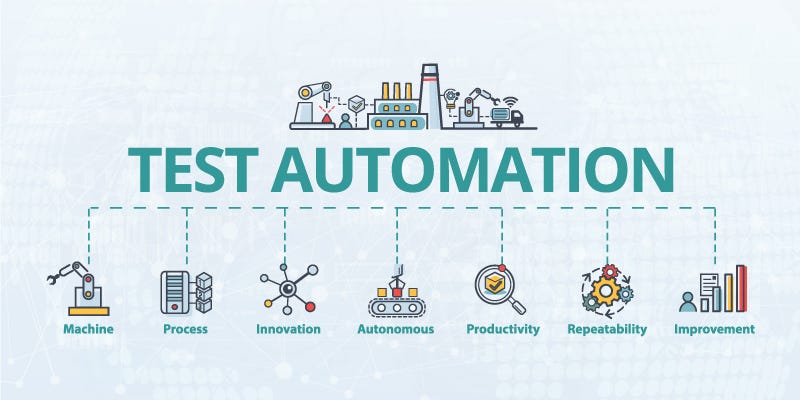From Handbook to Automated Testing: A Comprehensive Guide to Transitioning Smoothly and Efficiently
In the world of software application testing, the shift from manual to automated procedures has ended up being an increasingly crucial transition for companies seeking to improve efficiency and precision in their screening methods. The trip from manual to automated screening is not without its challenges, however when come close to tactically and with a clear strategy in mind, the benefits can be considerable.
Advantages of Automated Evaluating
Automated screening supplies numerous advantages, enhancing effectiveness and precision in software program growth processes. Automated tests can be run concurrently on numerous devices and operating systems, considerably speeding up the screening phase compared to hands-on screening.
Furthermore, automated testing makes certain a greater degree of accuracy in discovering defects. Consistency in screening is additionally boosted, as automated tests perform the same actions exactly each time they are run.
Selecting the Right Devices

To start with, examine your needs and goals. Comprehend the range of your project, the technologies involved, and the ability of your team. This analysis will aid you determine the abilities and functions you need in your testing tools.
Second of all, take into consideration the compatibility of the tools with your existing processes and systems. Smooth combination with your present software application development lifecycle is vital to guarantee a smooth transition to automation.
In addition, examine the scalability and versatility of the tools. As your testing requires progress, the tools ought to be able to adjust and suit modifications efficiently.
Lastly, consider the assistance and neighborhood around the tools. Robust assistance and an active user area can offer important resources and assistance when implementing automated screening. By meticulously taking into consideration these facets, you can pick the right devices that line up with your requirements and established the stage for an effective change to automated testing.
Writing Efficient Test Manuscripts

When crafting examination scripts, it is important to think about the specific needs of the software being examined and guarantee that the manuscripts deal with all essential capabilities. Detailed and clear naming conventions for test manuscripts and test situations can enhance readability and maintainability. Furthermore, including error handling devices within the test scripts can aid in identifying and attending to problems without delay.
Additionally, arranging examination scripts into modular parts can boost reusability and scalability, minimizing redundancy and boosting efficiency in test manuscript upkeep. Regular testimonials and updates to test scripts are vital to equal progressing software needs and functionalities. By complying with these concepts, testers can create durable and reliable test manuscripts that add significantly to the click over here success of automated testing procedures.
Integrating Automation Into Workflows
Reliable assimilation of automation tools into existing workflows improves and enhances procedures performance within software program growth cycles. When incorporating automation right into workflows, it is important to determine repeated jobs that can be automated to conserve time and minimize human mistake. By effortlessly integrating automated testing tools like Selenium or Appium into the software development lifecycle, teams can achieve faster feedback on code changes, resulting in quicker insect discovery and resolution. This combination enables constant testing throughout the development procedure, making certain that any kind of concerns are recognized at an early stage, leading to higher software application high quality. Furthermore, automation can be utilized to set off tests immediately after each code commit, providing immediate recognition and releasing up testers to concentrate on more facility moved here circumstances. Appropriate integration of automation devices calls for partnership between development, screening, and procedures groups to establish a unified workflow that maximizes effectiveness and effectiveness in supplying high-grade software.
Ensuring a Smooth Shift
Efficiently transitioning to automated testing includes thorough planning and cautious implementation to maximize and lessen disturbances effectiveness in the software program advancement procedure - automation testing. To make certain a smooth transition, it is necessary to begin by performing a comprehensive evaluation of the existing screening processes and identifying areas where automation can bring the most substantial advantages. Involving with all stakeholders early on while doing so, including designers, testers, and job supervisors, is critical for garnering support and buy-in for the automation effort
Communication is crucial throughout this change stage. Clear interaction of the goals, advantages, and assumptions of automated screening assists to manage any resistance or worries that may arise. Furthermore, offering appropriate training and resources for employee to upskill in automation tools and strategies is essential for making sure a successful transition.

Conclusion
Finally, transitioning from handbook to automated testing uses many advantages, consisting of raised performance and integrity. By picking the ideal devices, writing effective test scripts, and integrating automation seamlessly into workflows, companies can ensure a effective and smooth change. It is essential to embrace automation as a valuable asset you could try this out in software program screening procedures to boost general quality and productivity.
In the world of software program screening, the shift from manual to automated procedures has actually ended up being a progressively important transition for companies looking for to improve efficiency and precision in their screening methods. Automated tests can be run all at once on several devices and running systems, drastically speeding up the screening phase compared to hand-operated screening. Consistency in screening is likewise improved, as automated examinations perform the same actions exactly each time they are run.To ensure the effective implementation of picked testing devices, the development of effective examination scripts plays an essential function in validating the capability and performance of automated procedures - automation testing. By complying with these concepts, testers can produce reliable and robust examination scripts that add considerably to the success of automated screening processes
Comments on “Exactly How Automation Testing Reinvents Quality Control Processes”